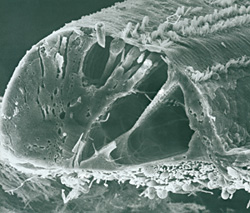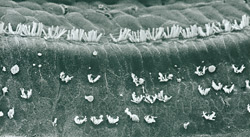DISPELLING THE MYSTERIES
We all remember the Greeks in their magnificent civilization had a number of great medical philosophers. It was Hippocrates himself who told us of the 5 special senses sight, sound, touch, taste and smell. Losing any one of these special senses significantly alters one’s quality of life.
Whereas losing one’s sight might be the most dramaticlosing one’s hearing brings with it enormous communication problems in terms of inter personal and societal relationships.
A person who’s hearing is damaged faces significant societal and social difficulties communicating with their fellows. And sadly its all too well known that society in general has little patience with those who suffer from hearing loss.
There are huge variations in the degree of hearing loss. Starting with the extremes a baby can be born deaf and if diagnosed early which is critical rehabilitation with cochlea implants and intense long term training can produce excellent results.
However the bulk of those with hearing loss are the more senior citizens. It’s a fact that in general terms at the age of seventy, 70% of people could use a hearing aid.


This is a natural progression in a manner the same as becoming far sighted. Ones hearing shows natural attrition with the passage of time. Shall we call it “ fair wear and tear”. Its not something which can be cured with either medications or surgery but in the vast majority of cases can be significantly helped by the wearing of hearing aids. I use the word in its plural form as bilateral hearing amplification is definitely superior. We do after all have two ears.
The inner ear, the cochlea, has between 20 and 40 thousand extremely delicate nerves and as time goes by they will in the natural process wear down.


With classic adult onset hearing loss hearing becomes difficult, especially in group social occasions. On “one to one” basis they will normally cope. But in a crowd situation there’s significant difficulty, and one can with confidence say that in any social situation where adults are in their mid fifties and onwards literally every one will be having some difficulty hearing. Men, in particular will deny this … the typical male ego … but its simple fact.
Fortunately help is now increasingly available because of the staggering increase in sophistication of hearing aids. Not only is their technology advancing at an electrifying pace but so is the understanding of the complexity of the sound stimuli entering the ear and being interpreted by the brain. The two are inexplicably linked.
So the days of wearing a clumsy and very obvious hearing aid are in essence a thing of the distant past.
Current technology is focused on the digital system bringing with it enormous benefits. Similarly, as regards the actual aid itself, understanding that no one really looks forward to wearing a hearing aid, the aesthetics have enormously improved.
They’re now smaller and massively more efficient. There are a wide variety of styles and technologies available and all this has led to the wide acceptance of the public that hearing aids can, if properly fitted, be of enormous use.
No hearing aid promises to turn back the hearing clock completely but it can certainly bring what one might almost call a “social outcast” – someone who has withdrawn from society because of the hearing loss- back into more integration with society. They no longer feel cut off and isolated.
Being assessed for a hearing aid and fitted with one is something requiring considerable experience and expertise. This is the preserve of the Audiologist and Acoustician and in the ideal circumstances such as those that exist at The Hearing Clinic this is done in close association with an Ear, Nose and Throat Specialist.
The father of understanding the ear in South Africa was Carel Du Toit, the Professor at Tygerberg. He was clear and adamant that any person requiring a hearing aid should be assessed by a combined team of Ear, Nose and Throat Specialist and Audiologist or Acoustician. This combination is not only morally but practically correct in that both disciplines bring their knowledge and expertise into providing the correct diagnosis and treatment.
There are significant surgical possibilities available in particular kinds of hearing loss. In others, in fact the majority, hearing aid is what is required.
For a diagnosis of “what kind of hearing loss has occurred” to be made requires professional testing in a sound proof booth. The fact that there are some that actually test in an open office situation without sound proof booth is a matter of enormous concern. The information gained from this test is far too basic and insufficient to allow decision to be made on what type of hearing aid is required.
So unless a professional test by and Audiologist or Acoustician is made in a sound proof booth you must understand the test is largely inadequate and significant information not been obtained. This information is essential in deciding what kind of hearing aid will be required.
The modern hearing aid is programmed to fit your particular hearing loss profile and if there is a change in hearing can be reprogrammed to match this.
When being assessed for a hearing aid recall you are given the hearing aid on a trial basis for a month to enable adjustments to be made and you to decide whether the hearing aid is appropriate. Your relationship with the audiologist or acoustician will be extremely important and in many ways one can describe wearing a hearing aid as literally a marriage.
It requires adaptation and patience but in the majority of cases with co-operation and correct hearing aid selection the outcome will be a success. But remember it requires expert professional assessment and long term follow-up. The average hearing aid will last for between three and five years before replacement might be necessary.
The Hearing Clinic offers this expertise and is proud of its reputation. The hearing aids supplied are at the cutting edge of technology and from the most prestigious international suppliers. Indeed the state of the international hearing aid art. |



